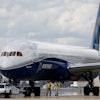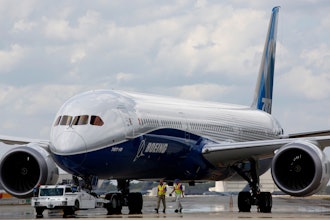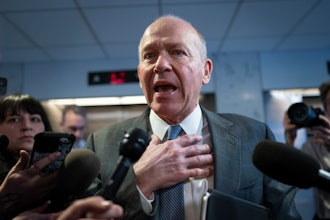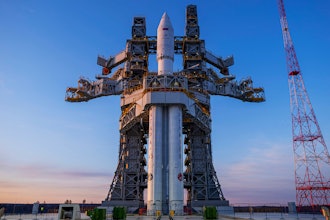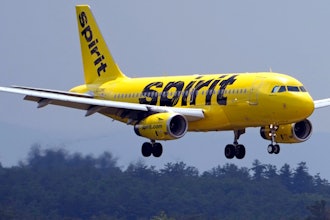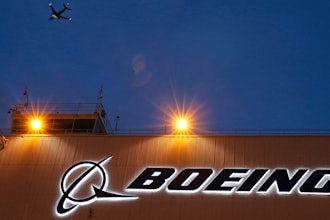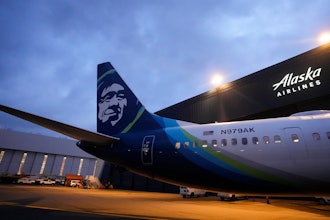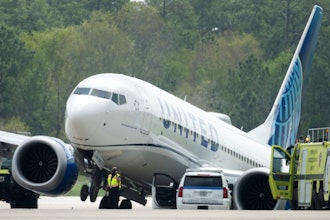PORTLAND, Ore. (AP) -- Oregon exports, which soared to a record $19.4 billion in 2008, plunged the next year and have been flat ever since.
Across the border in Washington, exports dipped only slightly during the recession and then took off, growing more than 50 percent since 2010 to a record $81.9 billion last year.
Ivo Trummer, global strategies manager for Business Oregon, the state economic development agency, sums up the reason in one word. "I think it's almost entirely Boeing," said Trummer, noting the billions of dollars in airplanes and parts sold abroad as the 787 Dreamliner entered production.
The focus on Boeing, the nation's biggest exporter, brings up a more fundamental difference between the two states that has national implications. With only two Fortune 500 companies, Oregon's economy is based on small and medium-sized enterprises. Washington boasts corporate giants with international range.
Small and medium-sized companies lack the critical mass to ignite an export boom, says Caroline Freund, an economist at the Peterson Institute for International Economics, a Washington, D.C., think tank. That's the main reason President Barack Obama's high-profile goal to double U.S. exports in five years is coming up short, she says.
"The emphasis on small and medium enterprises was misguided," Freund wrote in a recent paper critiquing Obama's National Export Initiative. "What was needed was a broad package to expand incentives for exporting by the most efficient and innovative firms that drive export growth and net job creation."
Exports matter in part because they support jobs here at home that pay more than average. Every $1 billion in additional sales abroad supports approximately 5,000 American jobs, according to the U.S. Commerce Department. When Commerce Secretary Gary Locke announced the national export initiative in February 2010, the former Washington governor said doubling exports would support 2 million jobs.
But the initiative appears far short of its goal, even when backers stack the deck by beginning the count in 2009 to capture the bounce-back from the recession. U.S. exports of $1.58 trillion had grown by $720 billion as of 2013; they'd have to grow another $860 billion this year to reach Obama's goal.
Freund says big companies dominate exports. The top 1 percent of U.S. exporters, fewer than 3,000 companies, is responsible for about 80 percent of merchandise exports. The other 99 percent of exporters, or 275,000 businesses, account for the remaining 20 percent.
"Thus, if small and medium enterprises are to drive export growth, it would take annual growth rates of roughly 50 percent to double exports in five years," Freund wrote.
Big companies with more than 500 employees generated almost three quarters of Washington's merchandise exports in 2011. Large businesses produced less than two-thirds of Oregon's exports that year.
So what's a state such as Oregon to do, short of cloning Intel, the company that drives the state's exports?
One approach is to question the statistics. Oregon's $18.6 billion in 2013 exports doesn't include the value of parts made in the state for products exported by other states.
For example, Boeing's factory in Gresham makes hundreds of millions of dollars of components for the Dreamliner and other planes that are sold abroad from Washington. Precision Castparts Corp., Oregon's only Fortune 500 company other than Nike, manufactures millions of dollars in parts for each Boeing 787 and many other components for jet engines and other products sold abroad.
Conventional trade statistics also don't include exports of services, which are growing well as Oregon lawyers, consultants and architects take on foreign projects.
One example of a service exporter is Avant Assessment, a Eugene company with three dozen employees. The producer of language-proficiency tests did a thriving business with U.S. defense and intelligence agencies until the federal sequestration cut contracts. Two years ago someone from the Qatar Foundation called and asked if Avant would produce Arabic tests for Qatari children.
"When I first heard of this, I thought it was a prank phone call," said Mimi Jett, Avant Assessment chief development officer, who wondered why anyone from the Middle East would reach out as far as Oregon for tests in Arabic.
But now exports account for almost half of Avant's annual sales, which the private company doesn't disclose. The company says it is close to signing a distribution agreement in Dubai for sales in about 10 countries.
Under the national export initiative, officials chose Portland as one of four cities to develop export strategies with help from the Brookings Institution. The Portland metro area exported $21 billion in goods and services in 2010. By 2012 that number had climbed to $33.9 billion, well on the way to the goal of doubling exports by 2015, said Derrick Olsen, Greater Portland Inc. vice president of regional strategy and coordination.
Sean Robbins, Greater Portland Inc. president and chief executive, said that on the local level, small and medium-sized enterprises are key to boosting exports.
"It's a complete waste of time, energy and money to claim that you're going to help big companies increase their exports," Robbins said. "They're pretty darn good at doing it on their own."
Michael Masserman, U.S. International Trade Administration executive director for export policy, promotion and strategy, said the national export initiative helps both large and small companies. He acknowledged that hitting the goal of doubling exports nationwide by next year is unlikely, especially given slow growth in export markets such as Europe.
"This was always going to be a stretch goal," Masserman said. "We've hit record exports for the last four years."
U.S. exports supported 11.3 million jobs last year, up 1.6 million since the initiative was launched, Masserman said. "The national export initiative has really galvanized communities across the country to focus on exports in ways they haven't before," he said.
The program has boosted export financing, educated U.S. companies about opportunities in markets opened by free-trade agreements, enforced U.S. trade rights and investigated unfair trade practices. Next steps include encouraging exporters to sell to more than one foreign country.
Masserman sees room for growth.
"Ninety-five percent of consumers live outside the U.S., and 80 percent of consumer growth in the next few years is going to happen outside the U.S.," Masserman said. "In the U.S., only 40 percent of companies in the tradable sectors are exporting right now."
Scott Goddin, U.S. Commercial Service Portland director, said he'd like to see Oregon's exports grow faster.
"But if there's more people exporting, that's increasing economic diversification for our producers," Goddin said. "The fact that they're more comfortable doing business internationally makes us more globally competitive."
